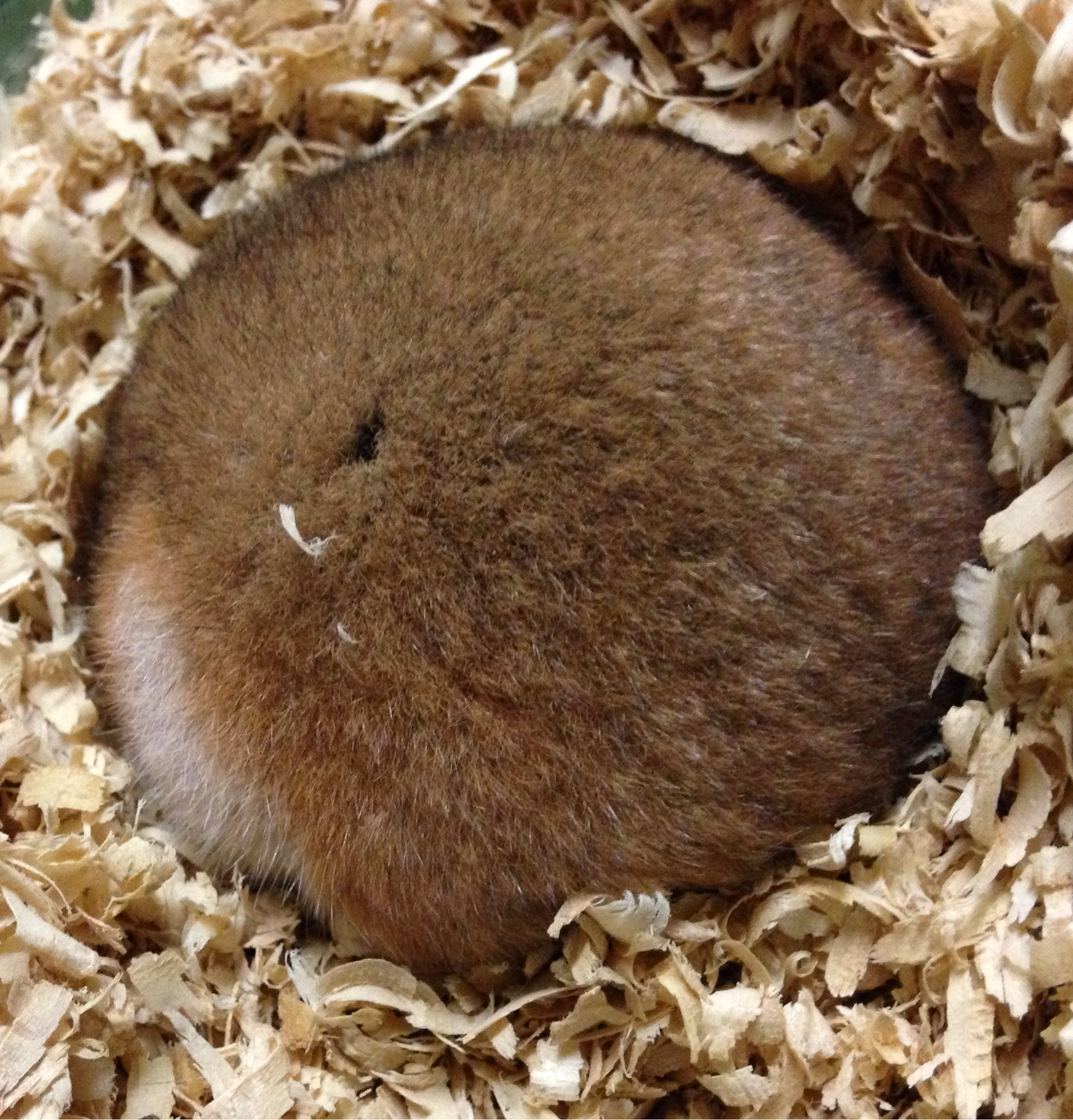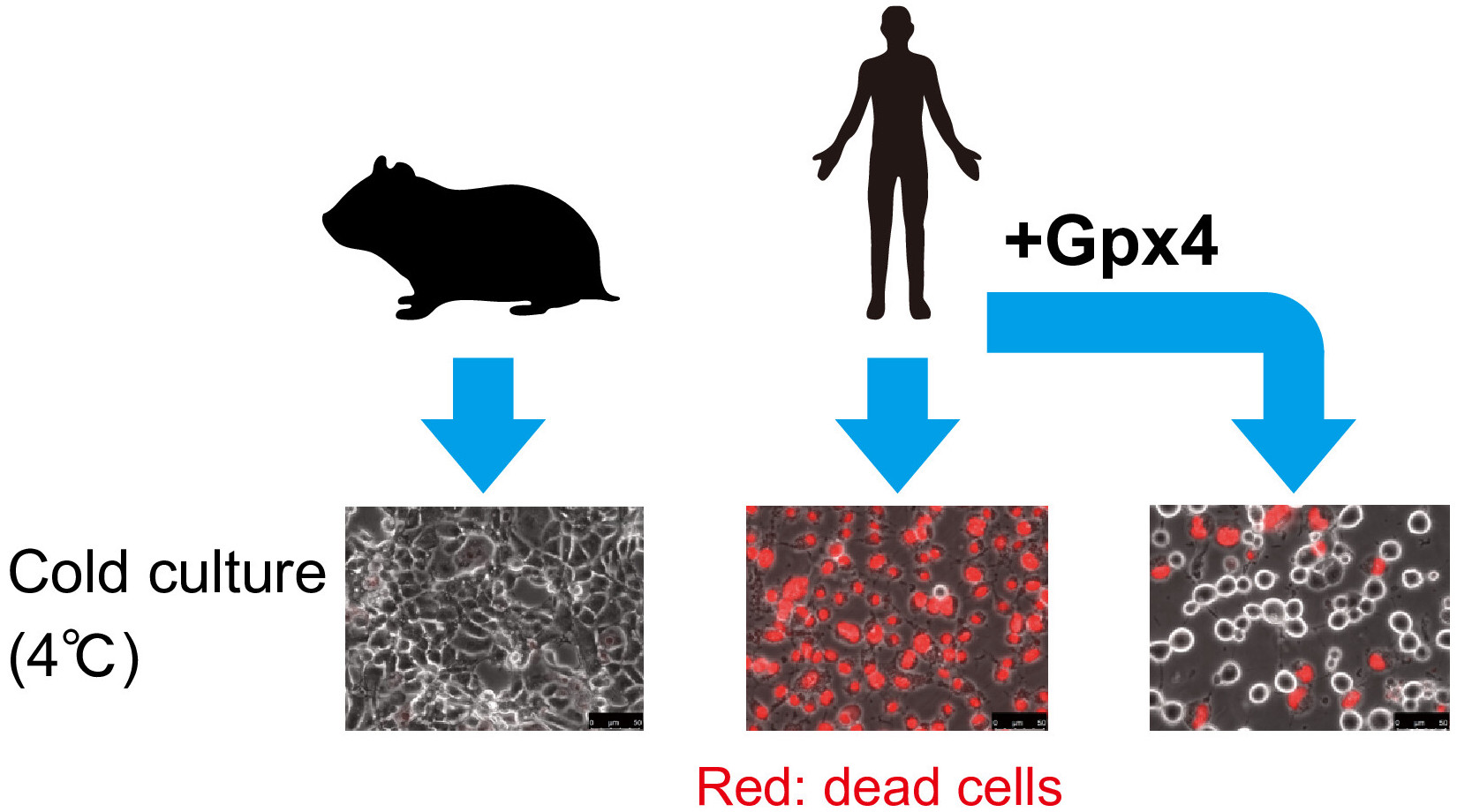A gene that limits cellular damage could be the key to surviving prolonged cold exposure.

A hibernating Syrian hamster (Photo: Hibernation metabolism, physiology, and development group, Hokkaido University)
Researchers have identified a gene that enables mammalian cells to survive for long periods at extremely low temperature, which animals experience during hibernation.
Body temperatures below 10 degrees Celsius (°C) swiftly prove fatal for humans and many other mammals, because prolonged cold stress causes cells to accumulate damaging free radicals-in particular lipid peroxide radicals-resulting in cell death and organ failure. But a few mammalian species can survive cold stress by hibernating. Hibernation in many small mammals involves cycles of days to weeks of deep torpor in which animals stop moving and their body temperature drops to extremely low levels, interspersed with short periods of normal body temperature and activity.
Now, a study led by Assistant Professor Masamitsu Sone and Professor Yoshifumi Yamaguchi of the University of Hokkaido, Japan, has identified a key gene that helps hibernating Syrian hamsters (golden hamsters, Mesocricetus auratus) to avoid cold-induced cell death. The findings were published in the journal Cell Death and Disease.
To identify the gene, the researchers first engineered cold-sensitive human cancer cells to carry genes from cold-resistant hamster cells, and then they exposed the human cells to the repetition of prolonged cold conditions and rewarming from the cold. By analyzing the genomes of the human cells that survived this cold exposure and rewarming stresses, the team could identify the hamster genes that had been incorporated into the human cells' genome and enabled them to survive the cold.
This analysis revealed a likely candidate: the gene coding for glutathione peroxidase 4 (Gpx4), one of a family of proteins already known to reduce the impact of reactive oxygen species in mammalian cells. When the activity of this gene was suppressed in hamster cells, either by engineering a knock-out version or by chemically suppressing its activity, the cells could only survive shorter periods of exposure to extreme cold-two days, instead of five-before they died due to the build-up of lipid peroxide.

Syrian hamster cell cultures survive in cold conditions at 4°C(left). Human cell cultures typically exhibit cell death in cold conditions (middle), but when Gpx4 is overexpressed by cells in the culture, cell death rate drops drastically (right). (Photo provided by Masamitsu Sone)
Gpx4 is expressed in human and hamster cells, but only hamsters can hibernate, so the research team examined whether human Gpx4 and hamster Gpx4 behave differently. Interestingly, they found that even the human Gpx4 can provide cold protection when overexpressed in human cells.
"It's still an open question why non-hibernator cells are much more vulnerable to cold stress than hibernator cells even though the expression levels of Gpx4 protein are comparable," says Sone.
These findings are a first step towards finally understanding the mystery of how some mammals are able to safely hibernate through extreme cold. The discovery could have potential applications for human health, such as improving the long-term preservation of organs for transplantation using low temperatures, or in the use of hypothermia as a therapeutic tool.

Masamitsu Sone (left) and Yoshifumi Yamaguchi (right), corresponding authors of the paper. (Photo provided by Yoshifumi Yamaguchi)
Original Article:
Masamitsu Sone, et al. Identification of genes supporting cold resistance of mammalian cells: lessons from a hibernator. Cell Death and Disease. September 19, 2024.
DOI: 10.1038/s41419-024-07059-w
Funding:
This work was supported by the Ministry of Education, Culture, Sports, Science, and Technology (MEXT)/Japan Society for the Promotion of Science KAKENHI (20H05766, 23H28012, 23H04939, 23H04940, 22K19320, 24K10062); Japan Agency for Medical Research and Development (AMED) (23gm6310019); the Grant for Joint Research Program of the Institute of Low Temperature Science, Hokkaido University (19K002); Toray Science Foundation; Takeda Science Foundation; Inamori Research Institute for Science; Cell Science Foundation; Sekisui Chemical Innovations Inspired by Nature Research Support Program; Sumitomo Foundation for Basic Research Projects; Naito Foundation; Uehara Memorial Foundation; Mochida Memorial Foundation for Medical and Pharmaceutical Research; Terumo Life Science Foundation; Joint Research of ExCELLS (21-205 22EXC202); and Akiyama Life Science Foundation.






